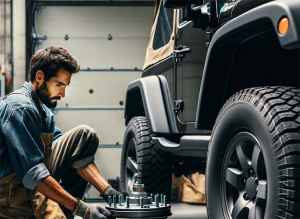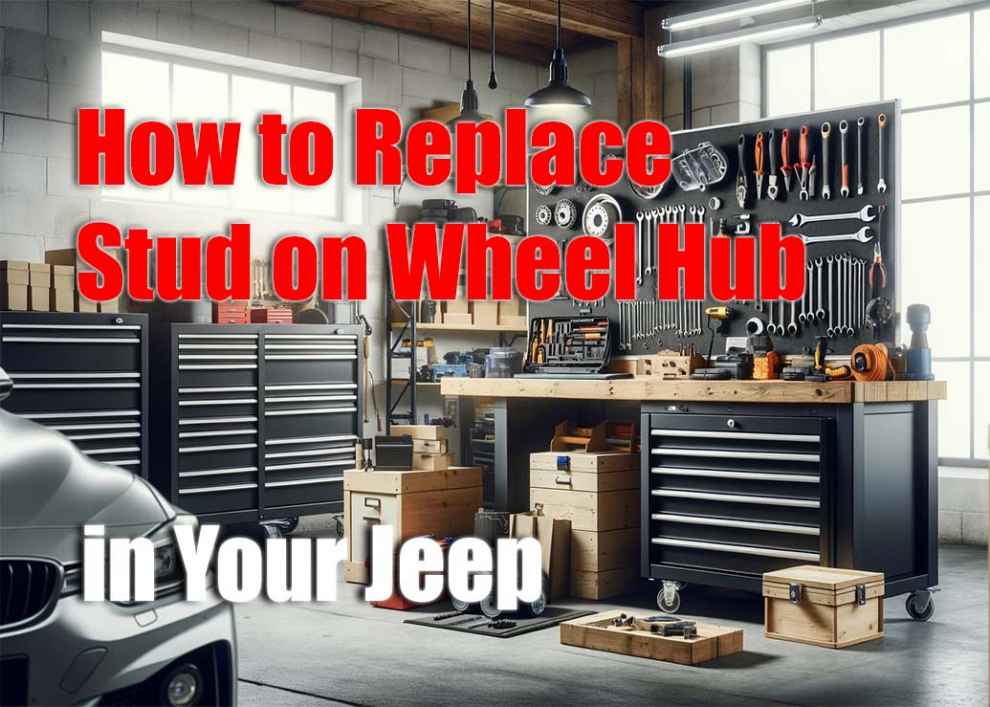Understanding how to adeptly manage and replace wheel hub studs stands as a cornerstone of vehicular upkeep. These diminutive yet critical components are pivotal in securing the wheel to your Jeep, a linchpin in the vehicle’s overall safety and operational integrity. This guide delves into a detailed exposition on replacing a wheel hub stud, providing Jeep enthusiasts and owners with a comprehensive walkthrough. From gathering the right tools to executing the replacement with precision, every step is laid out in simple, earnest language designed to empower you to enhance your Jeep’s reliability and your safety on the road.
The wheel studs serve as the unsung heroes of vehicular safety, anchoring the wheels firmly to the hub. A failure in this seemingly modest component can unleash significant dangers, including the potential for a wheel to detach during travel. This guide spotlights the essential process of replacing a stud on the wheel hub in your Jeep, a procedure that underscores the interplay between meticulous care and ensuring vehicular safety. Through a detailed, step-by-step approach, we aim to equip Jeep owners with the knowledge to maintain their vehicle’s structural integrity and safeguard their journey, no matter where it takes them.
Preparing for the Task
Embarking on the task of replacing a wheel stud necessitates a preparedness that is both thorough and informed. Below is a curated list of tools and materials essential for the procedure, designed to ensure that every step is executed with precision:
- Jack and jack stands: To lift and securely support your Jeep.
- Lug wrench and socket set: Critical for removing and tightening nuts with ease.
- Stud remover or hammer and punch: Preferred tools for the removal of the old stud.
- New wheel studs and lug nuts: Ensure you have the correct size and type for your Jeep model.
- Safety glasses and gloves: Essential for protecting yourself from potential harm during the process.
Approaching this task with the right tools not only facilitates a smoother repair but also underscores the importance of preparation in maintaining vehicular safety.
Removing the Broken Stud

Installing the New Stud
With the old stud removed, the path is clear for the installation of a new stud, marking a pivotal step in restoring your Jeep’s wheel hub. This stage involves careful alignment and insertion of the new stud, a task that may necessitate slight adjustments or removal of the brake dust shield to ensure a perfect fit. The use of washers and a lug nut facilitates the drawing of the stud into its rightful place, securing the wheel’s connection to the hub. This meticulous process not only reinstates the structural integrity of the wheel hub but also reflects the intricate balance between precision and safety in vehicular maintenance.
Safety and Maintenance Tips
Maintaining the wheel studs on your Jeep is not just about replacing them when they break; it’s about preventing those breaks from happening in the first place. Regular checks and maintenance are crucial to ensure that all parts of your vehicle are in good working condition. This includes inspecting the studs for signs of wear and tear, such as rust or threads that are starting to strip. Additionally, it’s important to make sure that the lug nuts are always tightened to the vehicle manufacturer’s specifications, using a torque wrench. This ensures that they are neither too loose (which could cause the wheel to wobble or come off) nor too tight (which could strip the threads or stress the stud to the point of failure).
For those interested in upgrading their Jeep’s braking system, our article on Best Brake Calipers for Jeep offers insights and recommendations to help you make an informed decision.
Conclusion
Replacing a wheel stud on your Jeep is a crucial maintenance task that not only ensures your safety but also maintains the integrity and reliability of your vehicle. By following a comprehensive guide, utilizing the proper tools and techniques, and adhering to safety protocols, you can effectively perform this repair with confidence. Moreover, regular inspection and maintenance of your Jeep’s components, along with strategic upgrades like enhancing the braking system, contribute to a superior driving experience. Remember, the key to a long-lasting and dependable vehicle lies in consistent care and attention to detail.

Add Comment